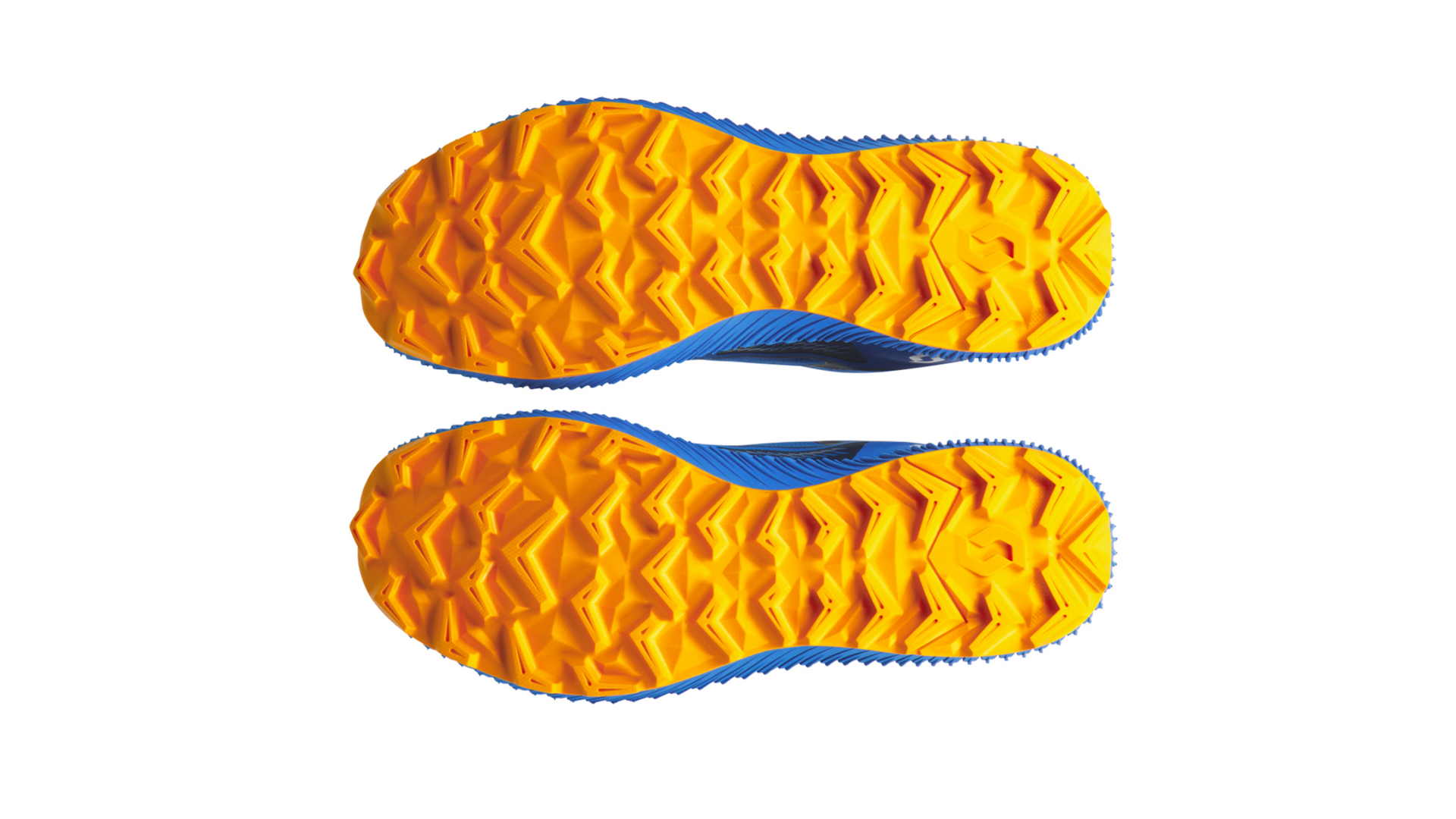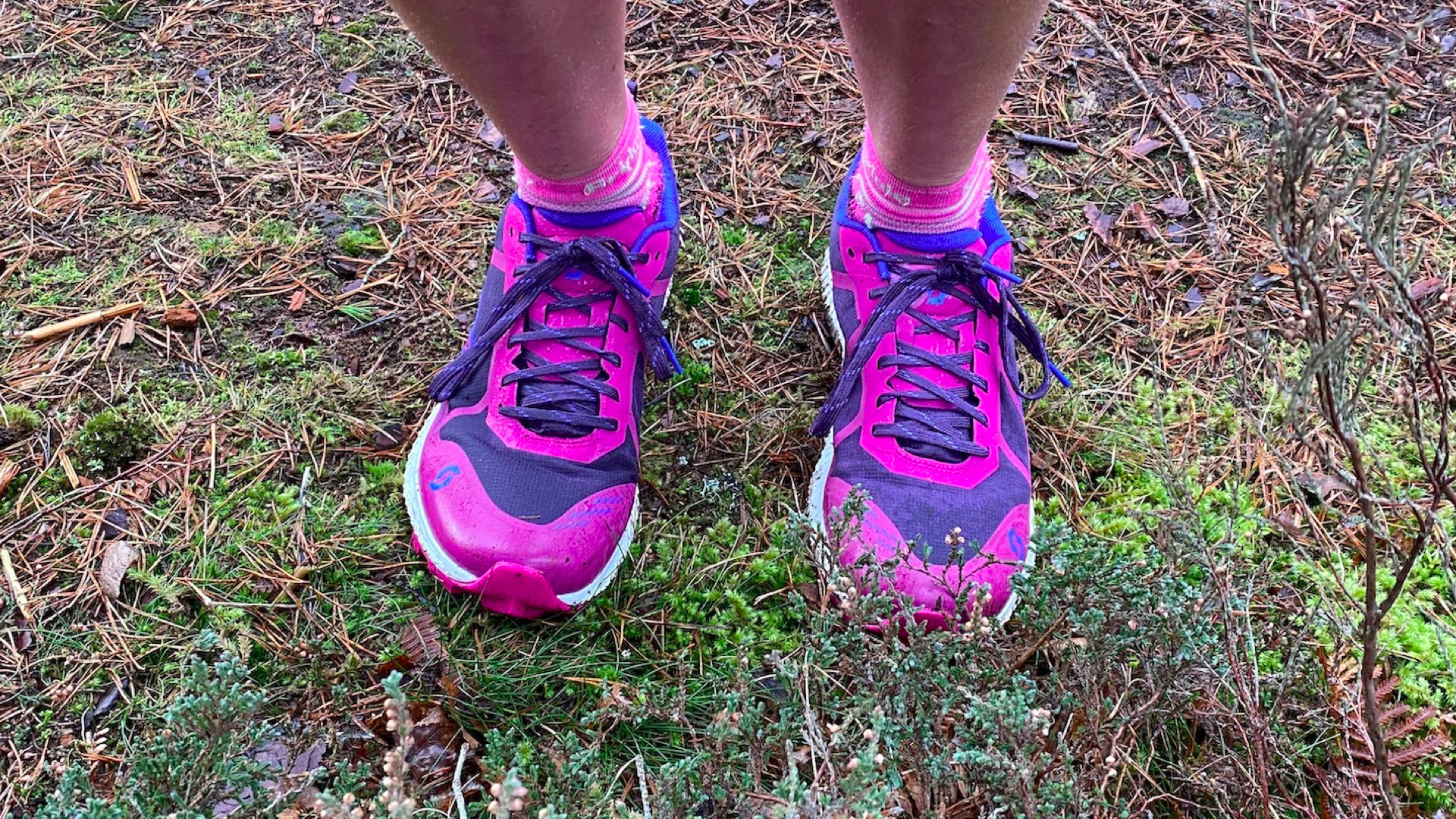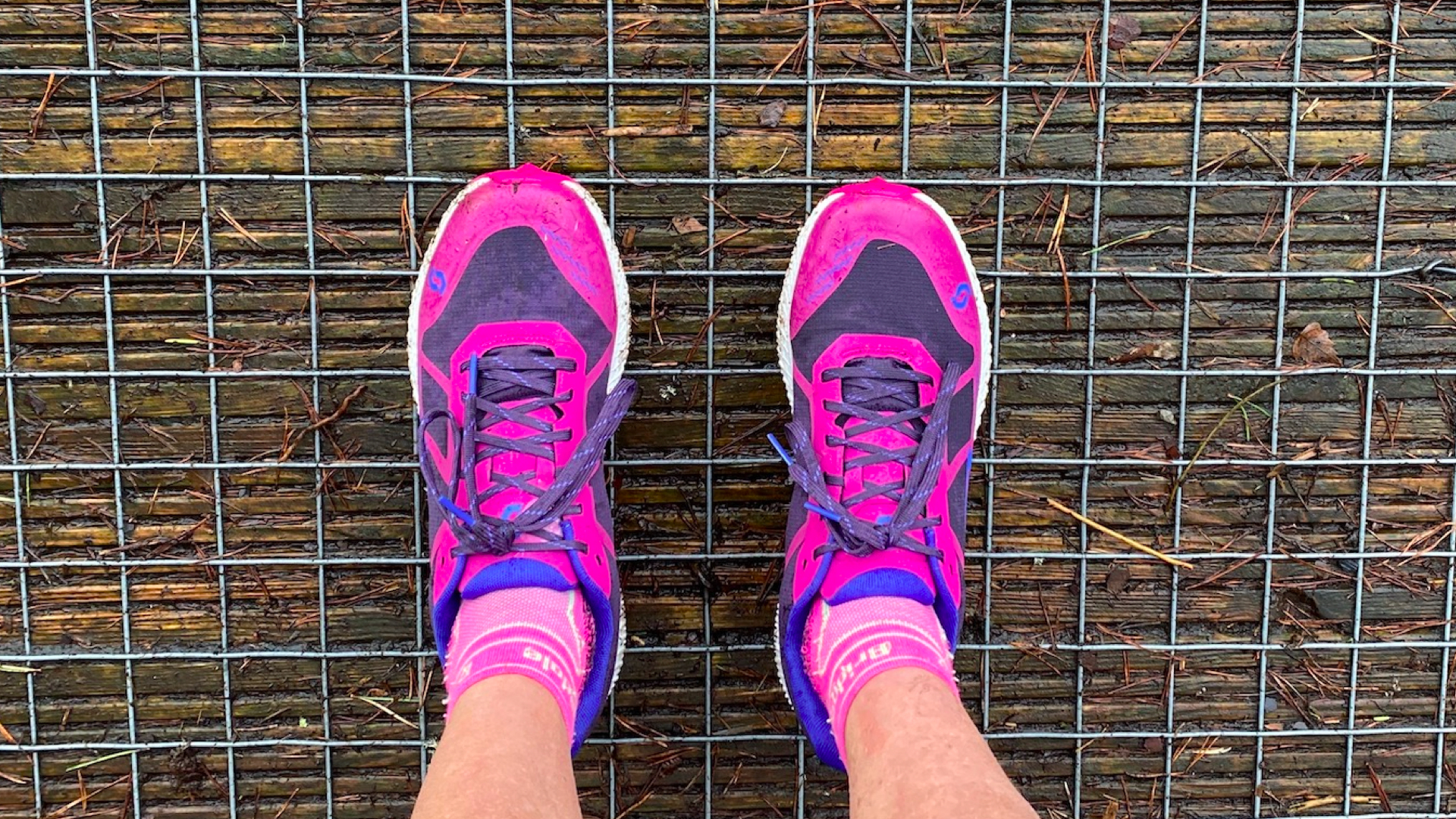Advnture Verdict
With an interesting mix of rigidity across the length of the shoe and cushioning in the midsole, the Scott Supertrac 3.0 offers a comfortable and ride and performs well on most terrain.
Pros
- +
Impressive attention to detail
- +
Good grip in mud
- +
Attractive colors
Cons
- -
Poor grip on wet rocks
- -
Stiff sole
You can trust Advnture
Scott Supertrac 3.0: first impressions
The Scott Supertrac 3.0 is an updated model of the Supertrac 2 and Scott describe it as their most popular mountain performance shoe.
The footwear features All Terrain Traction “to handle everything from the muddiest valley floor to rocky mountain ridges”, as well as a nylon ripstop upper for durability.
The Scott Supertrac 3 immediately look like practical trail running shoes, feeling both solid and durable. The drop is 8mm, with a heel depth of 29mm to a forefoot depth of 21mm, and there is plenty of protection from trail debris, by way of a toe cap and full circumference rand (see also: How to choose trail running shoes: drop, sole, grip, weight and more explained).
I tested the pink version, and while I don’t mind pink, I’d prefer more color choice for women; there are only two female colorways.
The rubber outsoles, with their “All Terrain Traction”, have decent lugs and these cover the full base of the shoes.

The insole cushioning feels generous thanks to Scott’s AeroFoam+. The brand states that AeroFoam+ gives “dynamic rebound to offer protection while maintaining an efficient stride”.
The outsole is fairly thin and quite stiff. There is also an “eRIDE Midsole”, which is described as “a rocker shape to create a stable mid-stance” and this “promotes the faster and more efficient running style that runners strive for”.
All the latest inspiration, tips and guides to help you plan your next Advnture!
• RRP: $140 (US) / £130 (UK) / €139.90 (EU)
• Weight (per shoe): Men’s 320g / 11oz Women’s 290g / 10oz
• Drop: 8mm
• Sizes: Men’s 7–13 (US) / 6–12 (UK) / 40–47.5 (EU) Women’s 5.5–11 (US) / 3–8.5 (UK) / 36–43 (EU)
• Colors: Men’s Jasmine Green & Smoked Green / Storm Blue & Bright Orange / Black & Storm Blue Women’s Carmine Pink & Amparo Blue / Glace Blue & Bering Blue
Scott Supertrac 3.0: on the trails

The shoe feels robust and well made. As well as good levels of insole cushioning, the Supertrac 3 has a cushioned and solid heel cup. It’s not the lightest trail shoe but, then again, it’s not especially heavy either.
My foot feels very stable in the shoe, which is good for winter trails, when feet are more likely to require support due to tougher terrain conditions, such as wet mud, snow and ice. I like a decent heel to toe drop and 8mm suits my style of running and my body dynamics (see also: how should trail running shoes fit?).
The sole is also noticeably stiff. I was worried that the shoe would feel too rigid and unresponsive on the trails but this wasn’t a problem – in fact, the trails that I run on are soft and so the stiff sole was fine. I noticed that when running on tarmac to reach the trails, the sole of the shoe slapped a bit and this is because it’s fairly inflexible (see also: Trail running shoes vs running shoes: what are the differences?).
While the sole of the shoe is stiff, the insole is well cushioned and this is different form other trail shoes that I run in, such as Hoka, where the cushioning in is the outsole, rather than in-sole. I like a bit of cushioning but if you don’t this shoe will feel too spongy.
In terms of Scott’s claims of AeroFoam+ giving a “Dynamic rebound to offer protection while maintaining an efficient stride”, I can’t honestly say my running felt any more efficient than in other trail shoes.

The outsole lugs are fairly deep and spread fully across the sole of the shoe. On the trails, the Supertrac 3 offered good grip, including when running through mud and on grass. When the path is steep and muddy, it’s a shoe that gives confidence. They are good on dry rocks, too.
However, I didn’t find the sole traction very good on wet rocks and tree roots. In fairness, I have not found any trail running shoes that don’t slip on wet tree roots but there are better shoes for wet rocks.
One area of the shoe design that I don’t like is the tongue, which is stiff and rises too high up the shoe. It might be that it’s my foot or ankle that is the issue but I was aware of the top edge of the tongue on the front of my ankle. When running, the stiff tongue was less noticeable but I found the generally stiff area around the heel cup and ankle a little too inflexible for my liking.

Fiona Russell is a widely published adventure journalist and blogger, better known as Fiona Outdoors. She is based in Scotland and is an all-round outdoors enthusiast with favorite activities including trail running, mountain walking, mountain biking, road cycling, triathlon and skiing (both downhill and backcountry). Aside from her own adventures, Fiona's biggest aim is to inspire others to enjoy getting outside and exploring, especially through her writing. She is also rarely seen without a running skort! Find out more at Fiona Outdoors.

